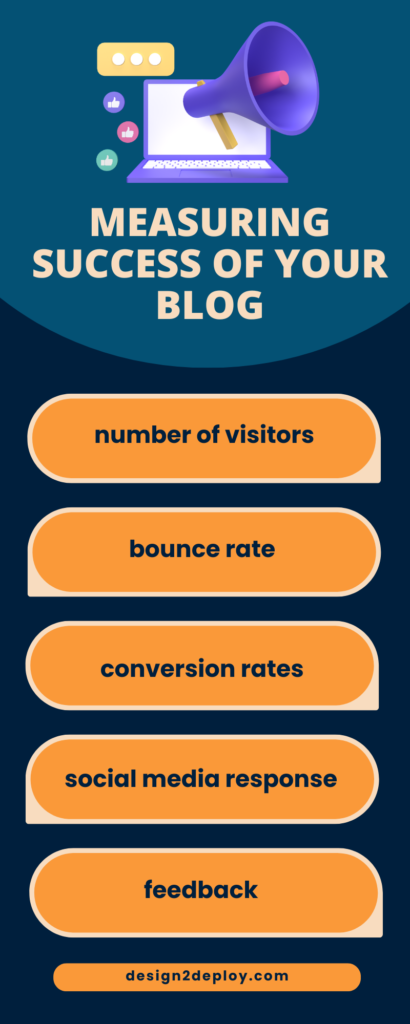Having a strong online presence is crucial for any business looking to thrive and grow. Blogging is one essential tool that helps businesses with lead generation and helps them expand their customer base.
In this blog post, we will explore why blogging is so important for lead generation and how you can create compelling content that converts. We’ll detail about how to identify your target audience and craft content that appeals to them. We’ll also discuss the role of SEO strategies in driving organic traffic to your blog and converting visitors into leads.
Why Blogging is Important for Lead Generation
- Expertise & Credibility – By consistently producing high-quality content that provides value to your target audience, you position yourself as a trusted source of information. This helps build trust with potential customers who are more likely to convert into leads.
- Online Visibility – When you create valuable content optimized for relevant keywords, search engines will rank your website higher in search results. This means that when someone searches for information related to your industry or products/services, they are more likely to find your blog posts and visit your website.
- Get Leads – Blogging gives you the opportunity to capture contact information from potential leads by offering valuable resources such as e-books or whitepapers in exchange for their email addresses. These contacts can then be nurtured through email marketing campaigns, which can further increase your chances of converting them into clients.
- Engagement – Blogging allows you to engage with your audience using comments. This creates opportunities for conversations and interactions which can further drive traffic back to your website.
Identifying Your Target Audience
When using blogging as a tool for lead generation, one of the most crucial steps is identifying your target audience. Understanding who you are trying to reach will help you create content that resonates with them and ultimately converts leads into customers.
Start by analyzing your existing customer base. Look at their demographics, interests, and pain points. This information can provide valuable insights into who your target audience may be.
Conduct market research to gain a deeper understanding of the larger audience in your industry. Use surveys or social media analytics to gather data on their preferences and behaviors.
Once you have gathered enough information, create buyer personas which is a fictional representation of your ideal customers. These personas should include details such as age, occupation, goals, challenges, and preferred communication channels.
By having a clear picture of who your target audience is, you can tailor your blog content specifically towards their needs and interests. This will increase the likelihood of attracting qualified leads who are more likely to convert into paying customers.
Crafting Content That Appeals to Your Audience
Crafting content that appeals to your target audience is a crucial aspect of blogging for lead generation. If your blog posts don’t capture your potential audience’s attention or provide them any value, you won’t be able to generate leads effectively.
After identifying your target audience, it’s time to brainstorm ideas for blog topics that address their needs or solve their problems. Put yourself in their shoes and think about what kind of information would be helpful or interesting to them.

When writing your blog posts, use language that is relatable and accessible. Avoid jargon or overly technical terms unless your audience consists of industry experts who understand such language. Use simple and easy-to-understand language to ensure that they understand your message.
Incorporating storytelling techniques into your writing can help you connect with your audience emotionally and make them more likely to engage with your content. Stories have the power to captivate readers’ emotions and make them feel more connected to your brand.
Remember the importance of visual elements in capturing attention. Use high-quality images or videos relevant to your topic throughout the blog post. Visuals can help break up text-heavy sections and enhance overall readability. Use images that are relevant to your target audience and that help to reinforce the message of your blog post.
By crafting content tailored specifically to appeal to your target audience’s interests and needs, you’ll increase engagement on your blog while also generating valuable leads for your business.
Utilizing SEO Strategies for Lead Generation
Utilizing effective SEO strategies is crucial when it comes to generating leads through blogging. Search Engine Optimization (SEO) plays a significant role in driving organic traffic to your blog and increasing visibility on search engine result pages.
To start, keyword research is key. By identifying relevant keywords that your target audience is using when searching online, you can optimize your content accordingly. Incorporate these keywords naturally throughout your blog posts to improve your chances of ranking higher in search results.
Additionally, optimizing meta tags and descriptions can boost click-through rates and attract more qualified leads. Make sure to include compelling headlines and enticing meta descriptions that accurately reflect the content of each blog post.
Link building is another important aspect of SEO for lead generation. Building high-quality backlinks from reputable websites not only improves your search engine rankings but also increases the credibility and authority of your blog.
The Importance of a Strong Call-to-Action
When it comes to blogging, a strong call-to-action (CTA) is a vital component for achieving success. It’s the tool that directs your readers towards taking the desired action, whether it’s subscribing to a newsletter, downloading an ebook, or making a purchase. Without a compelling CTA, your audience may leave without converting into leads or customers.
To create an effective CTA, you need to understand what motivates your target audience and align it with their needs and desires. You should use persuasive language that clearly communicates the value they will receive by taking action. For instance, instead of saying “Click here,” try something more enticing like “Get instant access now!”

The placement of your CTAs is also crucial. You want them to be easily visible and strategically positioned within your blog post. Consider placing them at strategic points throughout the content, such as after introducing a problem or presenting a solution.
Another important aspect of crafting strong CTAs is using eye-catching design elements like buttons or banners that stand out from the rest of your content. Color psychology can play a role in attracting attention and guiding users towards taking action.
Furthermore, it’s important to ensure that your CTAs are mobile-friendly since many people browse the internet on their smartphones nowadays.
It’s also worth testing different variations of CTAs to see which ones perform best for lead generation. Analyze metrics such as click-through rates and conversion rates to determine which strategies are most effective in driving conversions.
Measuring the Success of Your Blog
It’s critical to measure how successful your blogs are to understand how well they are performing in attracting leads.

- Number of visitors – You can track this using tools like Google Analytics, which provides valuable insights into the traffic sources and behaviors of your audience.
- Bounce rate and time spent on page – These metrics indicate whether visitors find value in your content and stay engaged with it.
- Conversion rates – Are visitors taking action after reading your blog posts? Are they signing up for newsletters or filling out contact forms? Tracking these conversions will give you a clear idea of how successful your content is at generating leads.
- Monitoring social media shares and comments – It can provide insights into the reach and impact of your blog posts. If people are sharing and engaging with your content on platforms like Facebook or Twitter, it indicates that it resonates with them.
- Feedback – Encourage readers to leave comments or ask questions at the end of each blog post. This not only helps you understand their needs but also fosters a sense of community around your brand.
By regularly analyzing these metrics and adapting your blogging strategies accordingly, you can continuously improve the effectiveness of lead generation through blogging. Remember
Blogging is one of the most powerful tools for lead generation. By creating valuable content that resonates with your target audience, you can establish your brand as an industry expert, attract qualified leads, and ultimately boost your business.
The secret lies in identifying your audience’s needs, crafting compelling content, and including an effective strategy that drives conversions. Regularly analyze the metrics and adapt your blogging strategies accordingly to improve the effectiveness of lead generation through blogging.



